Nothing screams "Việt Nam" like a steaming bowl of phở.
The beef noodle delight first appeared more than a century ago and has remained a popular culinary choice across the nation and beyond. Whether it is chicken or beef, phở is regularly named as one of the very best dishes in the world.
Anywhere from city corners to countryside roadsides, you can find simple phở shops with their alluring and distinctive flavour.
Vân Cù Village in Đồng Sơn Commune of the northern province of Nam Định has been regarded as the birthplace of phở with the longest tradition of cooking the dish.
Here, chefs can rely on a wealth of experience passed down from their ancestors.
Cồ Khắc Quyết, a fifth generation phở chef, said that he chose the ingredients for the dish carefully.
“When we go to the market early in the morning, we choose the freshest pieces of beef,” he told Việt Nam News. “We prefer the local cow breed that eats organic grass, not the hybrid one. We buy proper parts of the cow to make rare, well done, and brisket point beef. We choose round steak for the rare beef,” he said.
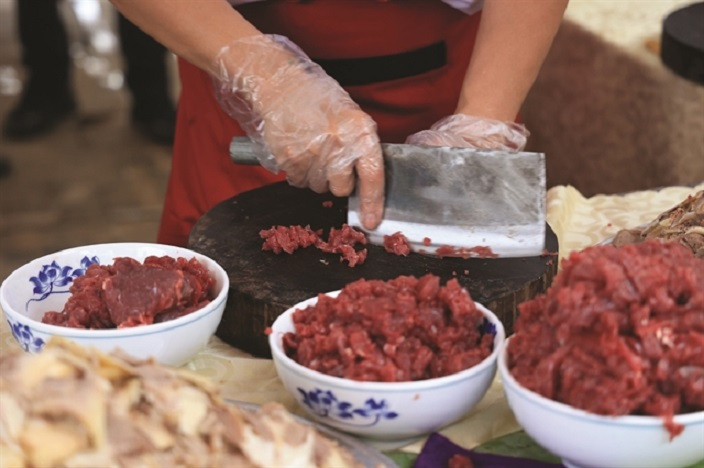
"For the broth, we wash the cow’s bones carefully and boil them in water for a clear broth. Then we add fish sauce, salt, anise, black cardamom and other spices for a perfect flavour."
Nonagenarian Cồ Hữu Chêm said that he learnt the profession from his father and grandfather, and he himself sold phở in Hà Nội for dozens of years before he handed down all his knowledge to his children and grandchildren, who now run some phở shops in Hà Nội and Hải Phòng.
“This is a hard profession,” he said. “If I sell phở in the morning, I have to get up at 3am to boil bones to make broth, and prepare meat, fresh flat rice noodles and aromatic herbs and other ingredients.”
To preserve the profession, a club of phở cooks was established in the village about three years ago.
They defined the standard quality for a bowl of phở, as well as the proper behaviour towards customers at phở shops under Vân Cù Village’s brand names.
Lê Thị Thiết, chairperson of the Nam Định Food Culture Association, said they aimed to help preserve traditional features of regions in the country without losing their cultural significance.
“We hope to define the standard quality and export spices and materials for making phở to the world so that chefs in other countries can cook Vietnamese phở closer to the right standards,” she said.
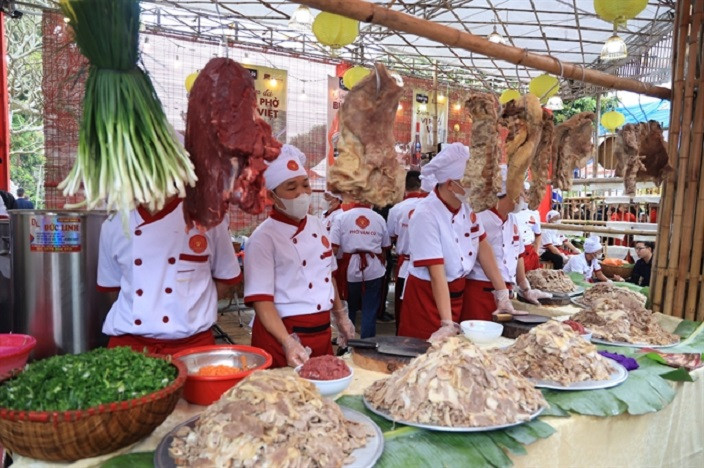
Dương Quốc Nam, president of the Việt Nam Young Chef Association, feels very proud that phở is among the dishes that have been considered as part of the national spirit of Việt Nam and much-loved by foreign diners.
“I think we should spare no efforts to publicise the local phở brand name and make people understand more about typical dishes of Việt Nam," Nam said.
Worldwide prestige
Phở is a typical national dish, and it is one that’s gained attention across the globe.
“For sure, I love phở and I was really surprised that phở actually came from Nam Định,” said French digital content creator Will Helm Le Courageux.
“Vietnamese culture is so rich, and there are so many kinds of phở and that’s why I’m here to try to promote and introduce it to foreigners.”
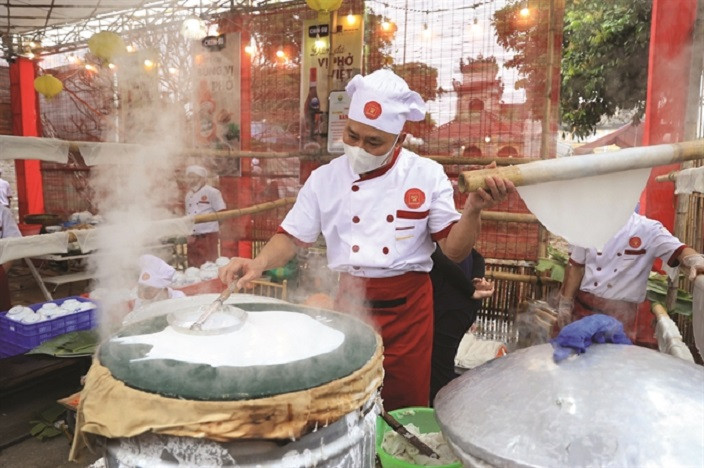
Ivana Judiakova, head of the Consular and Visa Section of the Slovak Embassy, said her family had enjoyed Vietnamese food a lot over the past two years, but the national dish was a standout favourite.
“If somebody says Việt Nam then we imagine phở and bánh mỳ as the special cuisine,” she said.
Phở is one of her favourite soups, and she eats it whenever she has a chance.
“It’s not only my opinion but also [the opinion of] whoever has been to Việt Nam or whoever is thinking about Vietnamese cuisine,” she said. “Phở is something that can’t simply be missed.”
Her 13-year-old son Gabriel Judiak said he had tried phở many times in two years in Việt Nam.
“I think it’s great,” he said. “It has the savouriness, which I really like, and the beef makes it better. I like meat.
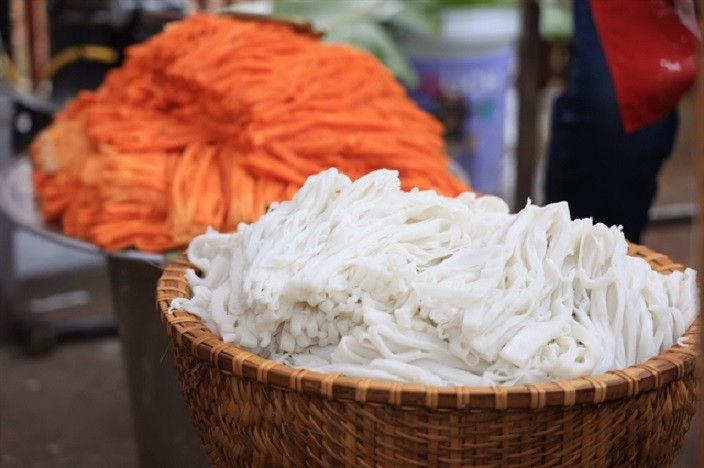
Nguyễn Thị Kim Thanh could not hide her pride that phở is from her father's native village.
“Many of my relatives and acquaintances from Nam Định sell phở across the country and abroad,” she said. “My friends in Germany are selling Vietnamese food. I am running a phở stall at Nội Bài Airport as well.”
Thanh finds the flavour of phở here is tasty, and familiar, different from the soup made by people from other localities.
She often cooks the soup at home when she has time: the essence of Việt Nam all found in one delicious dish.
Local authorities are compiling a dossier to seek a national intangible culture title for the local phở brand name. Relevant agencies will soon propose to UNESCO to name Vietnamese phở in the list of the world’s intangible culture.
Long tradition
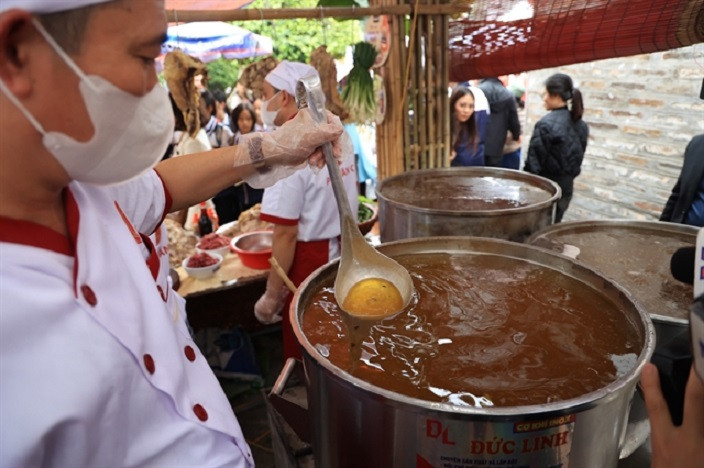
Historical documents say that Vân Cù Village used to produce rice noodles including bánh đa (rice noodle) and bún xáo (rice vermicelli).
During the French colonial era, after harvesting time, villagers would go over Nam Định to sell crab noodle soup, and vermicelli at densely populated areas, such as textile factories, seaports and train stations.
Phở bò (beef noodle) was a high-end creation by Vân Cù villagers to serve well off people as well as textile workers.
As cities developed, Vân Cù villagers travelled everywhere cooking beef noodles under the common brand name Phở Cồ (Phở Cù).
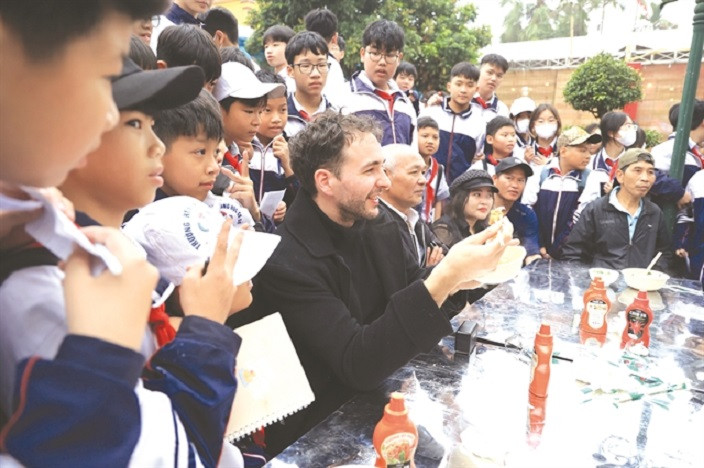
Presently, a great number of Vân Cù villagers have migrated all over the country and are earning stable income from the traditional beef noodle dish.
In Hà Nội, they have set up workshops producing fresh rice noodles and popular phở shops like Phở Cồ Cử, Phở Bát Đàn, Phở Hàng Đồng, which serve several hundred diners every day each.
The fifth generation of Vân Cù villagers today has copyright and registered phở franchises like Phở Ngọc Vượng, which runs six shops across Hà Nội. VNS